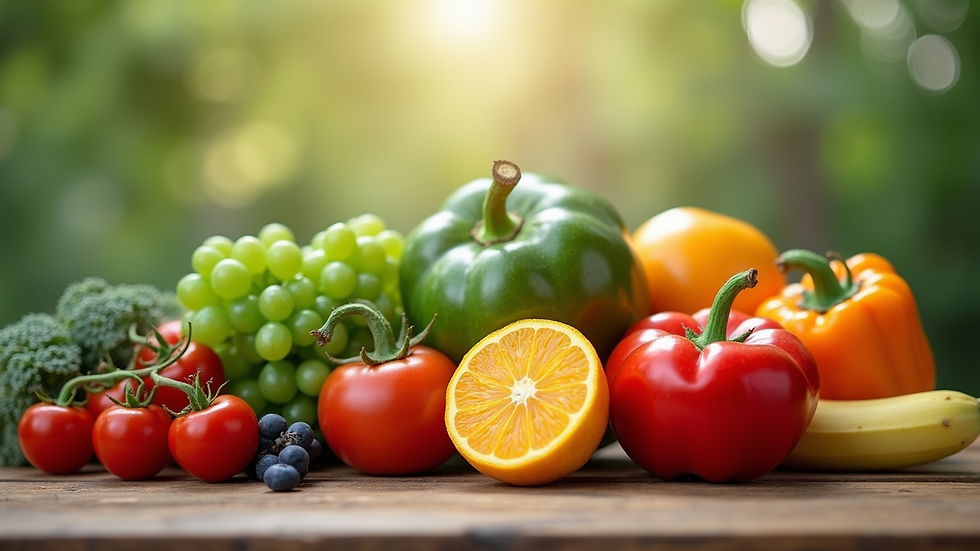Environmental Triggers. Part Two: Food
- Aug 18
- 3 min read
In Part One, we explored how symptoms are not random enemies to be fought, but messengers pointing us toward deeper imbalances. Now, in Part Two of our series, we turn to the very foundation of health—and often the very first trigger that sets imbalance into motion: food.
Food as the Body’s Primary Input
Every cell in the body depends on food. Nutrients extracted from what we eat (or fail to eat) are used to build tissues, regulate hormones, fuel immune defense, detoxify toxins, and even create neurotransmitters for the brain. In essence, food isn’t just fuel—it’s information.
When the body receives high-quality, species-appropriate food, this information tells cells how to repair, balance, and thrive. But when the input is poor—over-processed, species-inappropriate, or laced with chemicals—cells receive distorted instructions. The result? Miscommunication at the cellular level, leading to inflammation, immune dysfunction, and ultimately, disease.

What “Species-Appropriate” Really Means
The word appropriate is critical. Different species have evolved with very different digestive physiology:
Horses are grazing herbivores designed for a continuous forage-based diet. Their hindgut microbes ferment fiber to produce energy. Grain, soy, beet pulp, and molasses short-circuit this design, spiking blood sugar, disrupting gut flora, and contributing to ulcers, colic, laminitis, and metabolic disorders.
Dogs and Cats are carnivores. Their short digestive tracts and highly acidic stomachs are adapted for raw or lightly cooked meat, bones, and organs—not cereal grains, corn gluten, or synthetic vitamin premixes found in kibble. Feeding them processed carbohydrates not only stresses the pancreas and liver but sets the stage for chronic disease.
Humans evolved as omnivores centered around whole foods—unprocessed plants, clean proteins, and natural fats. Modern ultra-processed diets full of refined sugar, industrial seed oils, and chemical additives create systemic inflammation, insulin resistance, and microbiome collapse. Of course humans have different ideas but the idea of wholefood applies no matter your stance.
When we feed against design, we don’t just cause digestive upset—we erode the body’s blueprint for resilience.
The Science of Food as a Trigger

The gut is more than a digestion site; it is the headquarters of immunity, with over 70% of immune cells residing in the gastrointestinal tract. When food is inappropriate, several things happen simultaneously:
Inflammation rises: Refined grains, chemicals, and allergens irritate the intestinal lining, opening the door to leaky gut and systemic immune activation.
Microbiome imbalance (dysbiosis): Instead of healthy symbiosis, harmful bacteria and yeast overgrow, producing toxins and weakening
defenses.
Nutrient loss: Processing strips food of natural vitamins, minerals, and phytonutrients, forcing the body to run on “empty calories.”
Hidden toxins: Grains may carry aflatoxins (a potent carcinogen produced by mold), while pesticides accumulate in tissues, adding to the toxic load.
In this way, food isn’t neutral—it either builds the body up or quietly tears it down.
Food as Information, Not Just Calories
Each bite we feed—whether to a horse, dog, cat, or ourselves—delivers a chemical message that instructs DNA on how to respond. Whole foods, herbs, and clean nutrition say: “Repair, balance, detoxify.” Processed feeds and chemical additives say: “Inflame, stress, degenerate.”
This is why food is the first and most powerful trigger in the cascade of imbalance. Correct the diet, and you often correct the terrain in which disease thrives. Ignore it, and even the best treatments struggle to take hold.
Looking Ahead
In my years of herb testing and consultation, I’ve seen countless cases where stubborn imbalances could be traced back to food. When the foundation is rebuilt, the body often does the rest.
Food isn’t simply about surviving—it’s about thriving. And when we realign with species-appropriate nourishment, we open the door to resilience, vitality, and true healing.
Stay tuned for Part Three: Mold and Mycotoxins—where we’ll explore how hidden invaders in the environment challenge the immune system in ways food alone cannot.
With Love, Herbs & Harmony
~Debbi




Oh this is great! Thank you so much. I can't wait to read the rest of this series